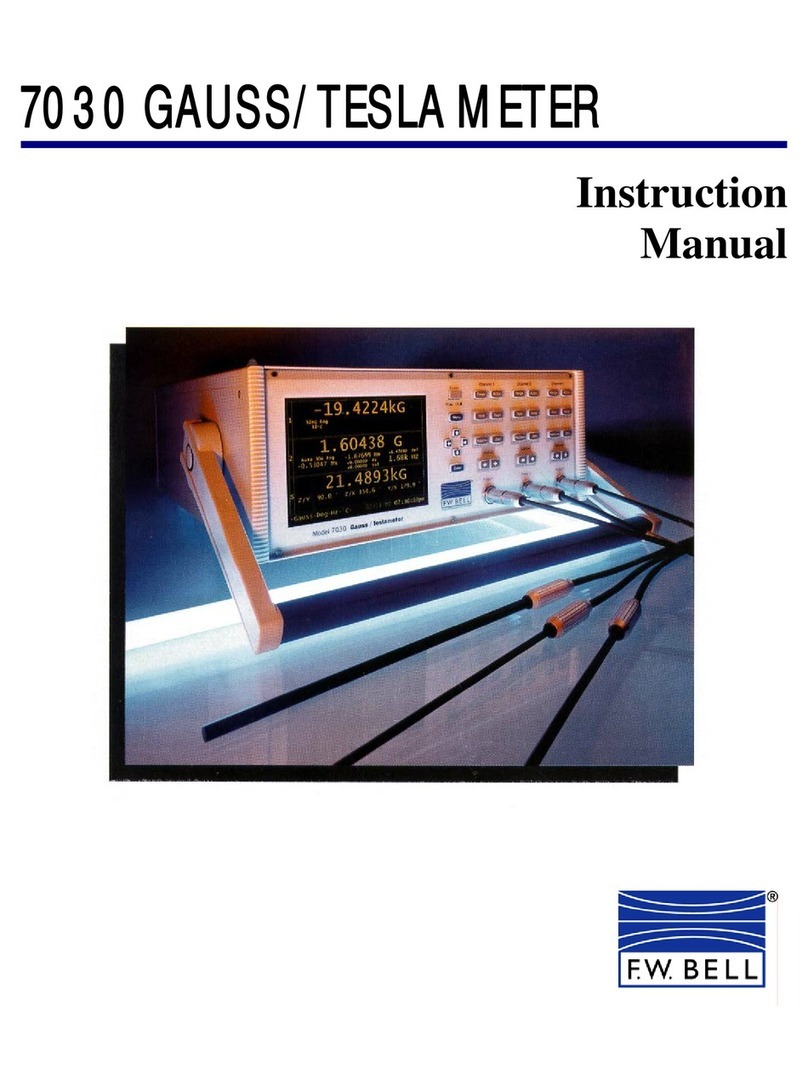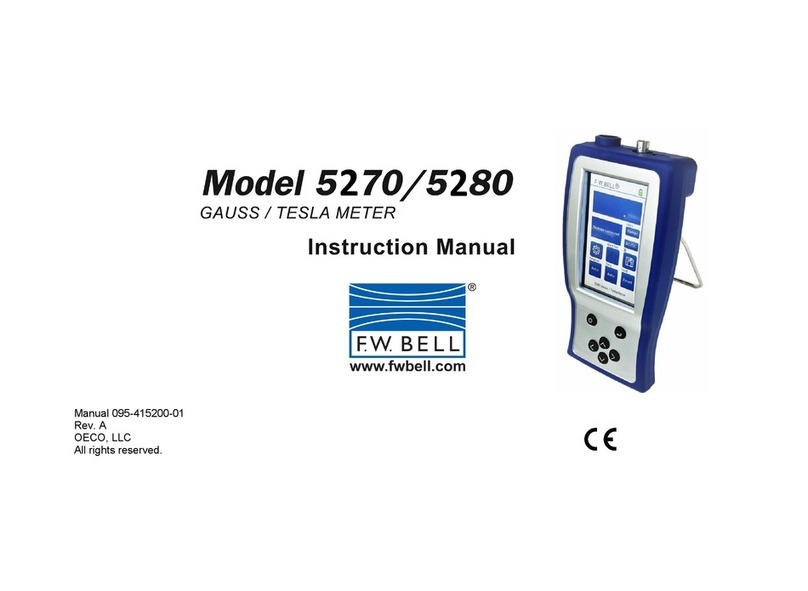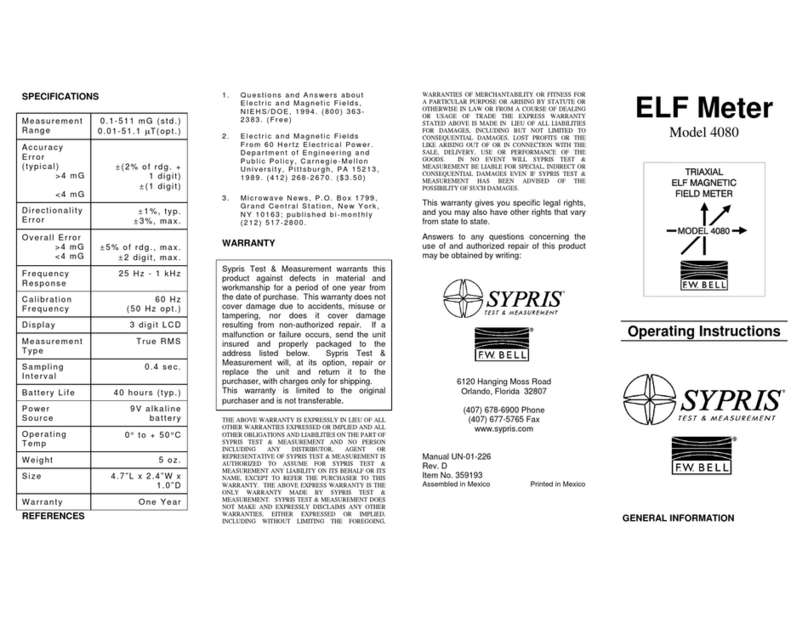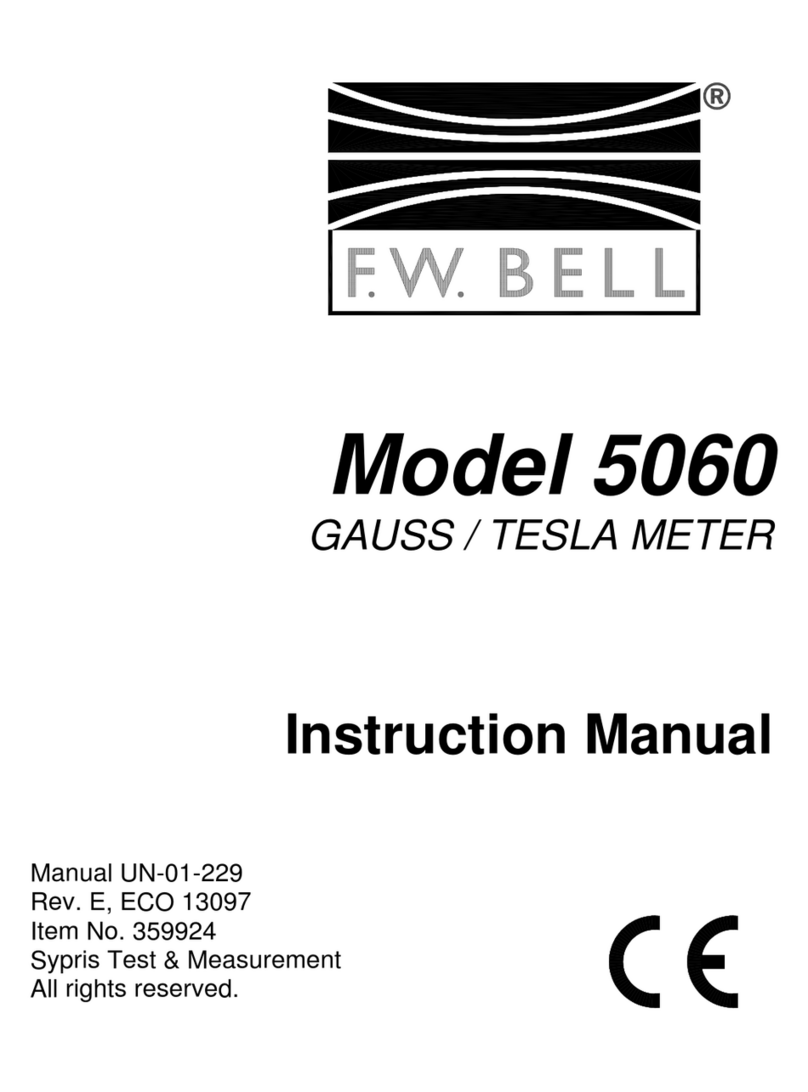
INTRODUCTION
1-2
General Operating Instructions and Application
The 4100 Series ELF gaussmeter is designed to measure only AC magnetic fields. These include but are not
restricted to the 50/60 Hz magnetic field emanating from power lines. ELF is an acronym similar to VHF or
UHF as used for television band frequencies. ELF stands for Extremely Low Frequency and is defined as the
band of frequencies from 30 to 300Hz. Although this meter will measure fields considerably above and below
those defined limits, this is usually the bandwidth of primary interest since most ELF magnetic fields are power
line related and within this bandwidth.
To operate the 4100 Series meters, first press the ON/OFF button and wait for unit to initialize. Unit will start up
in the last state it was when powered off. Move the 4100 towards a source of ELF radiation. Most appliances
that plug into a standard wall socket and have a motor or power transformer or that draw higher currents will
emit magnetic radiation when turned on. You should notice a change in the displayed reading as you move
closer to the source of a radiated magnetic field.
When you begin using the ELF gaussmeter, you will often find that the ELF field strength is strongest in one
particular area. For example, your computer screen (CRT) may have its greatest field level directly in the back
of it, thus affecting those around you. A bedside clock radio may emit a higher field level from its side where
the power supply circuitry is located. You can effectively reduce your exposure to ELF magnetic fields by first
locating the areas in your home or workplace where levels are the highest, and then by rearranging your living
space in a way that minimizes your exposure.
Hold the meter in front of and around the source of magnetic radiation, and position the meter in various
locations until a maximum reading is obtained. Both the 4180 and the 4190 are three-axis meters and an
individual axis can be selected. Take time to become familiar with this process and you will see that the
reading displayed is greatly affected by the orientation of the meter when operating in single-axis mode. This
is because the magnetic field not only has a magnitude or level but also a direction as well. The meter
responds to the magnetic fields whose direction is aligned with the axis selected on the meter. Fields parallel
in direction to the axis of the meter which has been selected will show a high reading in that direction and a low
reading in others.
Always keep these important points in mind when using the meter:
(1) One single axis can be selected for finding the general direction of the field. When operating in single axis
mode the position of the meter should be oriented in various directions until the maximum reading is obtained.
(2) The maximum reading will give the true indication of field strength at that particular location.
(3) In 3-axis mode (XYZ) the 4100 will indicate the field strength, but no directional information.
The above process can be repeated at various locations to determine the area in the home or workplace
where ELF magnetic fields are present. The Models 4180 and 4190 can assist you in locating the sources of
ELF magnetic radiation in the home or workplace, and thus allow you to take prudent steps to reduce your
exposure. As with most other forms of radiation, the level decreases as the distance from the source
increases.
Under normal operating conditions, the unit will provide about 30 hours of continuous operation using Alkaline
batteries, or 20 hours for NiMH rechargeable batteries. When the battery voltage falls below approximately
4.44 volts (1.11 volts per cell), a low battery indicator on the LCD will be activated. Most rechargeable cells
have a nominal voltage of 1.2V compared to 1.5V for alkaline cells, therefore the useable time before a low
battery condition is indicated will be shorter than for alkaline batteries. However, if the meter is used frequently,
rechargeable batteries will generally be much more economical since they may be re-used many times.
Batteries contain ferrous magnetic materials which can alter the sensitivity of field readings if removed. The
meter was calibrated at the factory with batteries installed.


































